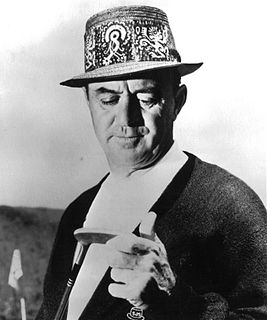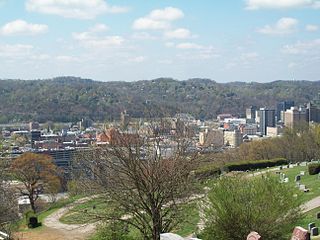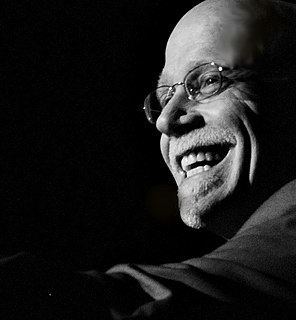
Samuel Jackson Snead was an American professional golfer who was one of the top players in the world for the better part of four decades and one of the greatest players of all time. Snead won a record 82 PGA Tour events, including seven majors. He never won the U.S. Open, though he was runner-up four times.

Charleston is the most populous city in, and the capital of, the U.S. state of West Virginia. Located at the confluence of the Elk and Kanawha rivers, the population during the 2017 Census Estimate was 47,929. The Charleston metropolitan area as a whole had 214,406 residents. Charleston is the center of government, commerce, and industry for Kanawha County, of which it is the county seat.

Michael Ammar is an American close-up magician. He is recognized worldwide as one of the greatest living magicians.
Civic Arena may refer to:

Matthew Mansfield Neely was an American Democratic politician from West Virginia. He is the only West Virginian to serve in both houses of the United States Congress and as the Governor of West Virginia. He is also the only person to have held a full term in both Senate seats from the state.
John Chandler Harper was an American professional golfer, best known for winning the PGA Championship in 1950. He won seven times on the PGA Tour and played in the Ryder Cup in 1955.

Herman Guy Kump was the 19th Governor of West Virginia from 1933 to 1937. In 1907, he married Edna Hall Scott. Usually referred to as H. Guy Kump, he served as the 19th Governor of West Virginia during the Great Depression.

The Huntington–Ashland metropolitan area is the largest metropolitan statistical area in West Virginia and includes seven counties across three states: West Virginia, Kentucky, and Ohio. New definitions from February 28, 2013 placed the population at 361,580. The MSA is nestled along the banks of the Ohio River within the Appalachian Plateau region. The area is referred to locally as the "Tri-State area". In addition, the three largest cities are referred to as the River Cities.
The 1835 Democratic National Convention was a presidential nominating convention that was held from May 20 to May 22, 1835, in Baltimore, Maryland. This was the second national convention of the Democratic Party of the United States. The delegates nominated Vice President Martin Van Buren for President and Representative Richard Mentor Johnson of Kentucky for Vice President.
Phi Rho Eta (ΦΡΗ) is a nationally incorporated, fraternity that was founded on August 22, 1994 at Southern Illinois University in Carbondale, Illinois. The founders are LaMont Taylor and Marvin Randolph.
The Virginia School Leaders Institute (VSLI) is a concept developed cooperatively in the Commonwealth of Virginia to provide a transition and mentoring relationship for new school leaders. The program is not a part of any required licensure program, but is developed to create optional experiential opportunities for new school leaders to assist them in their new role as school leaders. The effort is a cooperative venture between a consortium of nineteen school divisions and local universities, with Virginia Tech playing the major role in the fiscal operation. The operation of the institutes is also in cooperation with the outreach program aligned with the Hotel Roanoke, which is also part of the Virginia Tech effort.

Katherine Coleman Goble Johnson is an African-American mathematician whose calculations of orbital mechanics as a NASA employee were critical to the success of the first and subsequent U.S. manned spaceflights. During her 35-year career at NASA and its predecessor, she earned a reputation for mastering complex manual calculations and helped the space agency pioneer the use of computers to perform the tasks.
Calvin Ray McGillivray was an American football coach. He served as the head football coach at the New River State School—now known as West Virginia University Institute of Technology—in Montgomery, West Virginia for the one season, in 1927 season, compiling a record of 0–6.

Atkins Park is an intown neighborhood of Atlanta, Georgia, nestled against the southeast corner of the neighborhood of Virginia-Highland, west of Briarcliff Avenue and north of Ponce de Leon Avenue ("Ponce"). It consists of just three streets - St. Louis Place, St. Charles Place, and St. Augustine Place - as well as an internal sidewalk known as Malcolm's Way that bisects them from St. Charles to St. Louis. It was originally designed to give quicker access to the streetcar stop at Ponce.
The West Virginia University School of Public Health is a school of public health located in the United States city of Morgantown in the state of West Virginia; the WVU School of Public Health is the only School of Public Health in the state of West Virginia.
Mary Jean Harrold was an American computer scientist noted for her research on software engineering. She was also noted for her leadership in broadening participation in computing. She was on the boards of both CRA and CRA-W and was Co-Chair of CRA-W from 2003-2006.

The 1923 Rutgers Queensmen football team represented Rutgers University in the 1923 college football season. In their 11th season under head coach George "Sandy" Sanford, the Queensmen compiled a 7–1–1 record and outscored their opponents, 260 to 36. The team shut out six of nine opponents, including victories over Villanova (44–0), Richmond (56–0), Boston University (61–0), and Fordham (42–0), but lost to West Virginia (7–27). At the end of the 1923 season, coach Sanford surprised the football world by retiring from the game at age 53. He was inducted into the College Football Hall of Fame in 1971.














